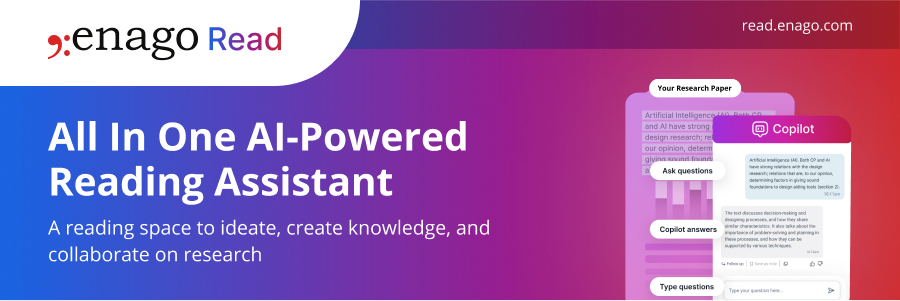Transparent Peer Review a Success at Nature Journals

Across many scientific disciplines, the voluntary peer review system is strained, if not under outright siege1,2. This trend is of great concern because peer review is an essential component for the advancement of science and the academic enterprise3. In its ideal form, the peer review process provides crucial expert feedback to authors on their work, and helps editors evaluate the validity, soundness, and significance of scholarship. Nevertheless, there have been many criticisms directed at the current peer review system4—namely that it remains somewhat antiquated and has not adapted itself to the changing times, especially given the high specialization and volume of research produced, the entrenched “publish or perish” culture, and rapid technological changes (e.g., Internet, Open Access)2.
However, there is hope, for change. Several creative solutions have been proposed to improve the peer review system. One approach is to discourage “cheaters” by introducing a currency required “to pay” for the peer-reviewing of one’s own manuscript submission which is earned by doing one’s own fair share of peer-reviewing2. Another fruitful suggestion is to standardize the peer review system within the major scientific disciplines1. A different approach, now gaining traction, is that many peer reviewers feel more valued if they receive documented recognition for their efforts, e.g., by Publons, which could also aid in their career advancement. Another way to speed up the peer review process calls for “a golden rule”, whereby, “you review for others as you would have others review for you”5. But there is still another, perhaps better solution.
Transparent Peer Review
The notion that the peer review process itself needs to be “opened up” is perhaps the most controversial solution. At its most basic level, this would entail not “double-blind” reviews (whereby authors and reviewers are unknown to each other) but rather full disclosure, thus doing away with reviewer anonymity1). Presumably, this should increase the quality of reviewing, but it has not caught on yet.
Another crucial dimension of transparent peer review is to make the actual reviews available not just to other reviewers (so-called “cross reviews”1) but to also have them and author rebuttals published alongside the accepted version of the manuscript. In fact, the sharing of the reviewer reports is already required by a few journals, namely PeerJ, BMJ, and F1000Research6. The key benefit of this approach is that—unlike conventional peer review—by providing this information, the reader is privy to basis on which an editorial decision was made to accept and publish. In short, the reader is no longer left in the dark about such important decisions.
Early Success at Nature Communications
An auspicious development for transparent peer review has made big news recently. In January 2016, the open-access multidisciplinary journal, Nature Communications (part of the Nature Research portfolio of SpringerNature), initiated a 10-month trial of in-situ transparent review4. In so doing, specific conditions were strictly adhered to: (1) Authors had the option of opting out, that is of not permitting the peer review file to be published; (2) Any prior reviews of their manuscript at a different journal could not be published; (3) The peer reviewers had the option of retaining anonymity, if they so wished.
The extra effort seems to have paid off as Nature Communications recently announced that it will permanently adopt transparent peer review. This decision was based on the results of the trial, which were very encouraging. For example, an average 60% of the authors opted for sharing the review profiles, out of an eligible sample of 1200 submitted manuscripts. Another interesting and crucial outcome is that engaging in transparent peer review did not slow down the peer review process7. If it had, it might provide a strong disincentive for authors to share their peer review file including their rebuttals.
Not surprisingly, the opt-in percentages in the Nature Communications trial varied across disciplines, ranging from c. 45% (Atomic, Particle & Theoretical Physics) up to c. 75% (Ecology & Evolution)8. One plausible explanation for this variation is that in some fields, more than others, authors are already required to participate in another form of open peer review or transparent peer review system.
Will Transparent Peer Review Catch On?
Whether other science journals follow the lead of Nature Communications adoption of transparent review is questionable. One positive indicator is that the positive feedback in the Nature Communications trial is mirrored by results of a European Commission (EC) survey, in which more than 50% of 3062 respondents believed that “open peer review” would make peer review better overall6. Another positive sign is that another big publisher of science, Elsevier, which has experimented with published peer review reports, plans to expand this open review to other journals6. More outcomes and feedback from authors, reviewers, and editors alike at other journals would naturally be welcome.
Nonetheless, there are lingering concerns about transparent review. On its own, it is unlikely to be a long-term solution for what ails the peer review system1. For example, as a reviewer, knowing that your report will be published online, and permanently archived, might make you alter how you write your reports (use less technical language?)6. Perhaps, it will simply take time for transparent peer review to win more adherents in the scientific and academic communities. For now though, the future of transparent peer review looms brighter.
References
- Catarina Ferreira et al. (2015, April 10) The evolution of peer review as a basis for scientific publication: directional selection towards a robust discipline? Retrieved from http://onlinelibrary.wiley.com/doi/10.1111/brv.12185/abstract
- Jeremy Fox and Owen L. Petchey (2010, July 1) Pubcreds: Fixing the Peer Review Process by “Privatizing” the Reviewer Commons. Retrieved from http://onlinelibrary.wiley.com/doi/10.1890/0012-9623-91.3.325/abstract
- Sense about Science (2012, July) Peer Review: the nuts and bolts. Retrieved from http://senseaboutscience.org/activities/peer-review-the-nuts-and-bolts/
- Nature Communications Transparent peer review at Nature Communications. Retrieved from http://www.nature.com/articles/ncomms10277
- Mark A. McPeek (2009, May 5) The Golden Rule of Reviewing. Retrieved from http://www.jstor.org/stable/10.1086/598847?seq=1#page_scan_tab_contents
- Ewen Callaway (2016, November 10) Open peer review finds more takers. Retrieved from http://www.nature.com/news/open-peer-review-finds-more-takers-1.20969
- Nature Communications (2016, November 10) Transparent peer review at Nature Communications is a clear success. Retrieved from http://www.springernature.com/us/group/media/press-releases/transparent-peer-review-at-nature-communications-is-a-clear-success/11032770
- Nature Communications Transparent peer review one year on. Retrieved from http://www.nature.com/articles/ncomms13626










